By: Levi Opsatnic
Most of the time, the thought of winter fly fishing creates a dreadful image of dredging the bottom of the creeks with very heavy nymphs in hopes that any fish, even the occasional sucker or fallfish, can be persuaded to bite. This can be a fairly accurate representation, well, most of the time. In the middle of winter, whenever the temperatures are brutal and there is often snow on the ground and around the streams, there is one real saving grace to a fish less day. That is the all mighty midge, and boy are they prevalent in a lot of Pennsylvania’s spring creeks.
Belonging to the scientific family of Chironomidae, most midges are quite small, usually a hook size of about 18-32, with the sizes 20 to 24 being the most common in Pennsylvania’s waters. Though they do hatch year-round, I find myself doing the majority of my midging in the winter; this is mainly a result of the fact that most other aquatic insects simply don’t hatch in the frigid months. Even though midges are such tiny insects, trout will literally gorge themselves on them. I’ve heard the trout’s feeding behavior during midge activity being equated to humans eating popcorn chicken, and it’s pretty spot-on. This can be viewed in a sense that most people don’t get full from eating two or three pieces of popcorn chicken, rather they will continue to eat until they have had their fill; and trout will do just about the same thing. This is a real benefit to the angler because it allows them to fish over trout that are eating quite rapidly and generally pretty carelessly.
One real benefit to tying midge patterns is that they are usually pretty simple and cost-effective to tie. With a little practice, you’ll be able to knock out a dozen or so with very little effort. Even better, this rule of simplicity goes for their larval, pupal, and adult life forms; and even better than that, matching the midges in your water is usually as easy as figuring out their color.
This time around, we’ll begin right at the bottom of the midge’s life cycle, with tying a midge larva. The fly that I have chosen, the zebra midge, is one of my most commonly used larva and is known to catch trout nearly anywhere that midges are present.
Materials:
Hook: In the case of a midge, you can get away with really any curved or straight shank hook in the sizes of 18-32, but make sure that you have a wide enough hook gap so it doesn’t compromise your success in hooking the fish.
Thread: Black 8/0 Uni-Thread
Bead: I’m using a clear glass bead, however any form of metal bead will also work fine.
Body: Black 8/0 Uni-Thread
Ribbing: Fine silver wire
Collar: Black Super Fine dubbing
Tying Instruction:
STEP 1: Begin by sliding the bead onto your hook.
STEP 2: Wrap the thread around your fly to start the body of your midge. It is a good idea to use this as a base to start a gradual taper that extends to the rear of the bead (with the collar being the thickest portion of your fly).
STEP 3: Tie the ribbing in at the front and advance your thread just past the curve of the hook. At this point in the fly, it is important to ensure that your body is completely covered with black thread and no silver wire is poking through.
STEP 4: Wrap the ribbing around the body of your fly. Make sure that your wraps are evenly spaced to provide your fly with a consistent segmentation.
STEP 5: Apply dubbing and wrap a collar directly in between your last wrap of wire and the bead.
The Finished Fly:
Whenever there are clearly no midges hatching, fishing their larva can be done similarly to any other nymph that you may fish, in a sense that it works very well bounced along the bottom. However, when you notice that a hatch of midges is occurring, you can take the weight off and fish your fly higher in the water column. This will represent the larvae that are beginning to make their way up the water and eventually into their adult form. Another very important aspect of the midge to make note of is that they come in a range of colors, but some of the most common in Pennsylvania are tan, grey, black, green, and red.
The next time you find yourself on a stream in the dead of winter, try throwing on a midge, and I’m sure you won’t be disappointed in your results. And don’t be fooled by their small size because I have seen some pretty large trout fall victim to a properly presented winter midge.

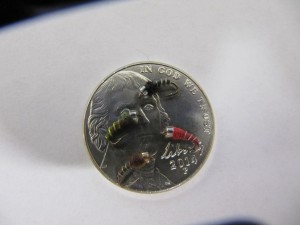
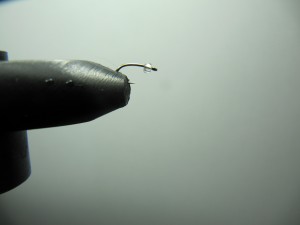
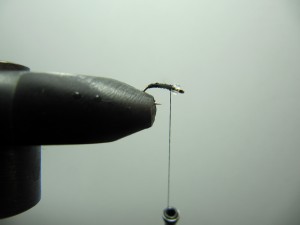
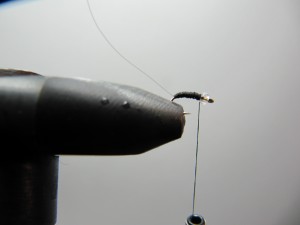
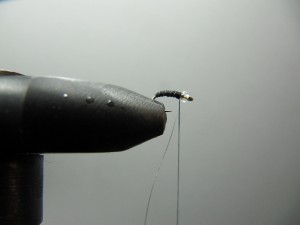
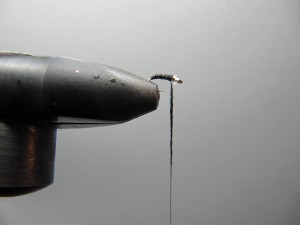
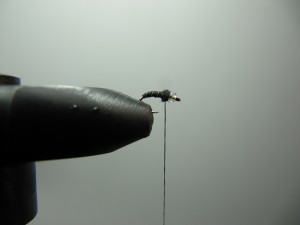
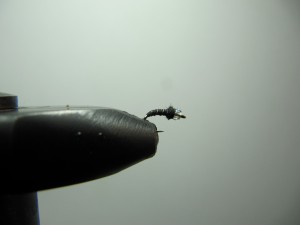
Wow, thank you very much for this wonderful information about midges, didn’t know a lot of it. Have had some great days fishing these little buggers.